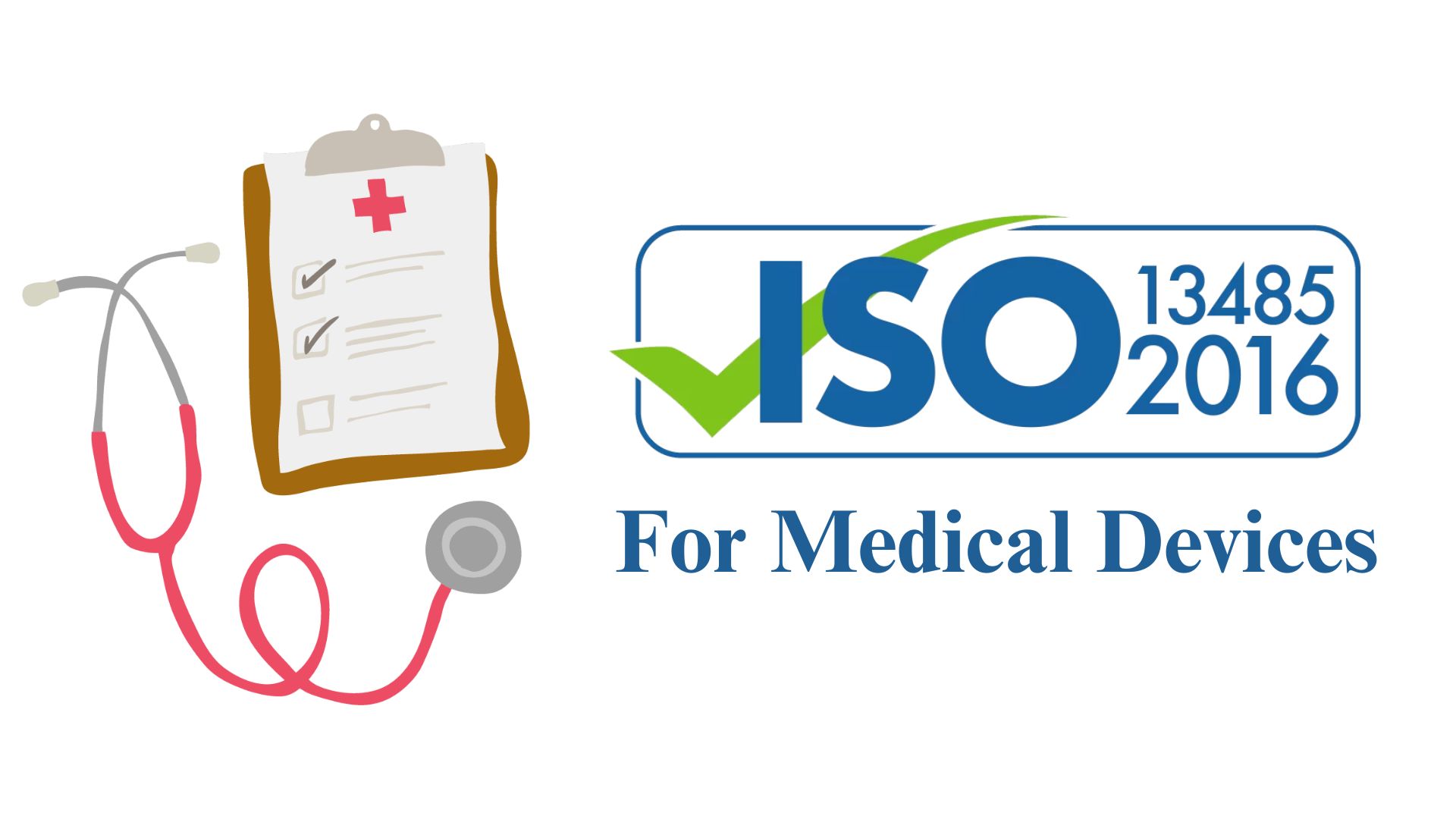In the world of medical devices, quality and safety are of
paramount importance. Manufacturers and suppliers in this industry must adhere
to stringent standards to ensure that their products meet the highest quality
and regulatory requirements. ISO 13485 is one such standard that specifically
addresses the quality management systems (QMS) for medical devices. This blog
aims to shed light on the purpose of ISO 13485 and the key requirements it
entails.
ISO 13485:2016 provides the parameters for a quality
management system that demonstrates the capacity to supply medical devices and
related services that fulfil customer and relevant regulatory requirements on a
consistent basis. In this blog post, we will explain what ISO 13485:2016 is,
why it is important, and how to implement it in your organization.
What is ISO 13485:2016?
ISO 13485:2016 is the latest edition of the standard that
was first published in 1996. It is based on the ISO 9001 quality management
system standard, but with additional requirements and adaptations for the
medical device industry. ISO 13485:2016 covers all stages of the life cycle of
a medical device, from design and development to production, storage and
distribution, installation, and servicing. It also covers the design and
development or provision of associated activities, such as technical support.
ISO 13485:2016 is applicable to any organization that
provides medical devices or related services, regardless of its size or type. It
can also be used by suppliers or third-party vendors that offer such organizations with product or quality management system-related services.
However, ISO 13485:2016 does not specify the requirements for the medical
devices themselves, which are subject to different standards and regulations
depending on the market and jurisdiction.
QMS based ISO 13485:2016
A QMS is a set of policies, procedures, processes, and
resources that an organization uses to plan, implement, monitor, and improve
its performance and achieve its objectives. A QMS based on ISO 13485:2016 helps
an organization to:
- Establish a systematic and consistent approach
to managing its activities and processes.
- Demonstrate its ability to provide safe and
effective medical devices and related services.
- Meet or exceed customer expectations and
increase customer happiness.
- Comply with applicable regulatory requirements
and facilitate market access.
- Identify and address risks and opportunities.
- Continually improve its QMS and its overall
performance.
Why is ISO 13485:2016 important?
ISO 13485:2016 is important for several reasons:
- It helps ensure the safety and effectiveness of medical devices and related services by establishing a systematic approach to quality management and continuous improvement.
- It helps meet customer expectations and needs by delivering consistent and reliable products and services that conform to their requirements.
- It helps comply with applicable regulatory requirements by providing a framework for demonstrating conformity and facilitating audits and inspections.
- It helps enhance the reputation and credibility of the organization by showing its commitment to quality and customer.
What is the purpose of ISO 13485?
The primary purpose of ISO 13485 is to establish a robust
quality management system that enables medical device manufacturers to
consistently meet regulatory and customer requirements. By implementing ISO
13485, organizations can enhance their ability to manage risks, ensure product
safety, and demonstrate compliance with applicable regulations. ISO 13485 also
aims to promote harmonization in the medical device industry by providing a
globally recognized framework for quality management.
What
are the requirements of ISO 13485?
Requirements of ISO 13485:
1.Quality Management System (QMS): ISO
13485 requires organizations to establish and maintain a documented QMS that
complies with the standard's requirements. This includes defining the scope of
the QMS, documenting procedures, and implementing processes for quality
planning, resource management, product realization, and measurement, analysis,
and improvement.
2. Management Responsibility: Top management
plays a crucial role in ensuring the effectiveness of the QMS. ISO 13485
requires management to demonstrate commitment by defining the quality policy,
assigning responsibilities, conducting management reviews, and promoting a
culture of continual improvement.
3. Resource Management: Adequate resources,
including personnel, infrastructure, and work environment, must be allocated to
support the QMS. Competence, awareness, and training requirements for personnel
involved in quality-related activities should also be addressed.
4. Product Realization: ISO 13485 emphasizes
the importance of a systematic approach to product realization. It requires
organizations to establish processes for product design and development,
purchasing and supplier control, production and service provision, and
identification and traceability of product components.
5. Measurement, Analysis, and Improvement:
To ensure ongoing improvement, ISO 13485 mandates the establishment of
processes for monitoring, measuring, and analyzing the QMS's performance. This
includes conducting internal audits, implementing corrective and preventive
actions, and managing records.
ISO 9001 vs ISO 13485
ISO 9001 is a general quality management system standard
that can be applied to any organization, regardless of its size, type, or
industry. It focuses on customer satisfaction, continual improvement, and
risk-based thinking. The most recent version of this standard is ISO 9001:2015.
ISO 13485 is a specific quality management system standard
for medical devices and related services. It is derived from ISO 9001, but with
some adaptations and additions to meet the regulatory requirements and
expectations for the medical device industry. The most recent version of this
standard is ISO 13485:2016.
Some of the main differences between ISO 9001 and ISO
13485 are:
- ISO 13485 has more emphasis on risk management
and risk-based decision making throughout the quality management system, not
only in product realization.
- ISO 13485 does not require the organization to
demonstrate continual improvement of its quality management system, but only to
maintain its effectiveness and alignment with regulatory requirements.
- ISO 13485 does not include the concept of
organizational context, interested parties, and quality objectives, but instead
requires the organization to establish its quality policy and quality manual.
- ISO 13485 has more detailed and prescriptive
requirements for design and development, validation, verification,
traceability, sterile medical devices, implantable medical devices, and
post-market surveillance.
- ISO 13485 allows the organization to exclude
design and development controls from its quality management system if permitted
by regulatory requirements, while ISO 9001 does not allow any exclusions from
its requirements.
ISO 13485 Documentation Requirements
ISO 13485 requires the organization to document its quality
management system in a systematic and consistent manner. The documentation
includes:
1- Quality manual: A document that describes
the scope, structure, and main policies of the quality management system.
2- Quality policy: A statement that
expresses the organization's commitment to meet customer and regulatory
requirements and to maintain the effectiveness of the quality management
system.
3- Quality objectives: Measurable goals that
support the achievement of the quality policy (not required by ISO 13485).
4- Quality procedures: Documents that
specify how the processes of the quality management system are carried out,
controlled, and monitored.
5- Quality records: Documents that provide
evidence of the conformity and effectiveness of the processes and activities of
the quality management system.
6- Work instructions: Documents that provide
detailed guidance on how to perform specific tasks or operations (not required
by ISO 13485 but may be necessary for some processes).
7- Forms and templates: Documents that
facilitate the collection and recording of data and information (not required
by ISO 13485 but may be useful for some processes).
Conclusion
Complying with ISO certification 13485:2016 for medical devices quality
management systems is crucial for organizations operating in the medical device
industry. This standard sets out the requirements for establishing,
implementing, and maintaining an effective quality management system that
ensures the safety and effectiveness of medical devices. By complying with ISO
13485:2016, organizations can enhance customer satisfaction, mitigate risks,
and demonstrate their commitment to producing safe and reliable medical
devices. It also enables them to access global markets by meeting international
regulatory requirements and improving their overall competitiveness in the
medical device industry.
There is also other ISO certification that will benefit your organization; the companies should apply certificate through the leading consultant of ISO Certification in Delhi.

